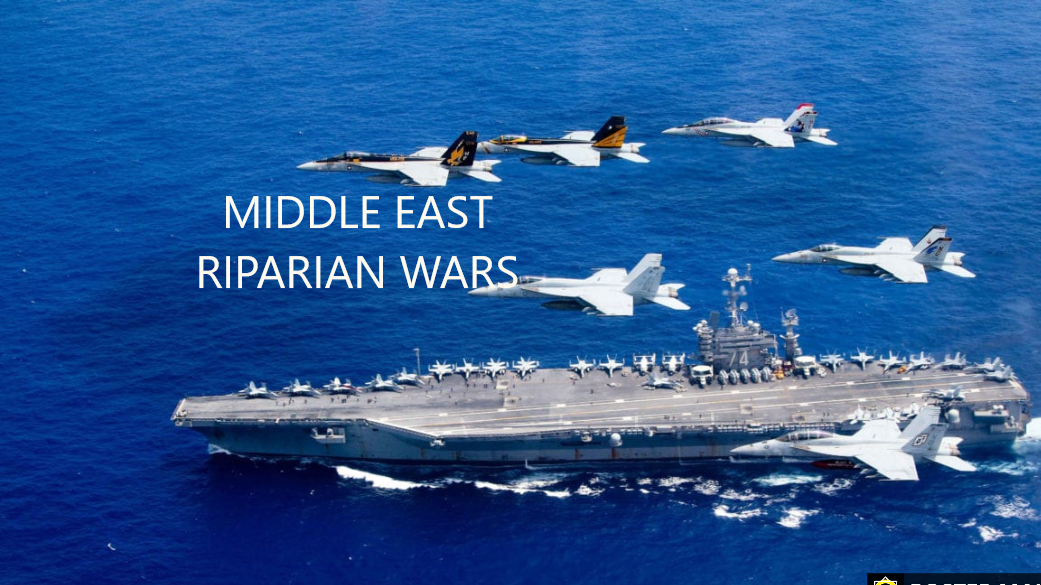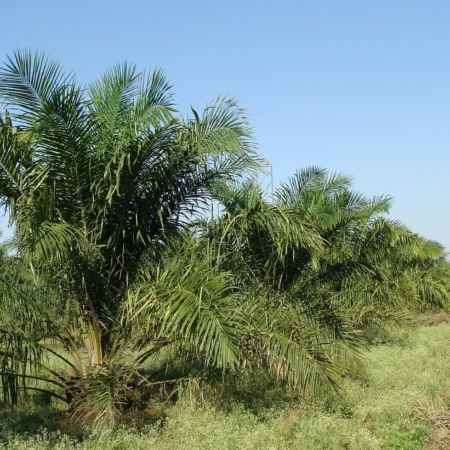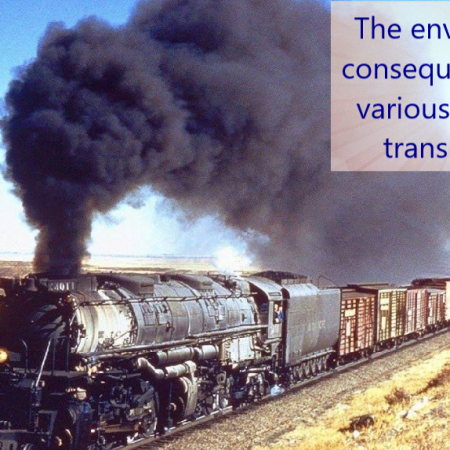Geopolitics Of The Middle East In The Light Of Riparian Rights: Water Wars
Introduction
The Middle East, a region that has been rife with religious, ethnic and political tensions for a very long period, is frequently viewed as an archetypical example of an intractable conflict (Handelman, 2008). For many years now, the idea that violence and climate change can go hand in hand has been persistently incepted into people’s minds (Welzer, 2012).
First of all, water is arguably the world’s single most important finite resource. Indispensable to every sector of human activity, water has no known substitutes for most of its uses, unlike oil, for example, dependence on which can be reduced by switching to other means of generating energy (Chellaney, 2013). Life would not be possible without it. Therefore, it is logical to assume that the critical degree of water scarcity can easily create a serious rift even between friendly and peaceful neighbours.
Secondly, water is one of the few vital resources that know no political boundaries and, therefore require “balancing competing interests of various stakeholders” (Kramer, 2008). Failing to do so can potentially lead to disputes that can snowball into violent conflicts-especially if the predictions about the looming threat of water scarcity become true. Gleick (1993, p.99) also pinpoints the importance of the extent to which water supply is shared by more than one region or state as well as the power dynamics in the region as a source of potential rivalry that could spark a full-scale war between the parties concerned.
All these countries are in the Middle East, which characterized by its shortage of water resources. Since the 1970s conflict between riparian counties were noticed due to population growth rates, food security, energy needs, economic and technological development, political fragmentation, international water laws, water and management availability and public awareness. These caused tensions, which sometimes escalated to the verge of war.
Overview of The Middle East Conflict
Water politics in the Middle East deal with the control of the water resources of the Middle East, an arid region where issues of the use, supply, control, and allocation of water are of central economic importance. Politically contested watersheds include the Tigris–Euphrates river system which drains to the south-east through Iraq into the Persian Gulf, the Nile basin which drains northward through Egypt into the eastern Mediterranean Sea, and the Jordan River basin which flows into the Dead Sea (400 m below sea level), a land-locked and highly saline sea bordered by Jordan to the east and Israel to the west
Especially the Nile and the Tigris–Euphrates formed the Fertile Crescent, a cradle of civilization and birthplace of agriculture (and agrarianism) dating back 10,000 years. Farmers in the Mesopotamian plain practised irrigation from at least the third millennium BCE.
In the modern era, water politics in the region intensified with the Israeli Declaration of Independence of 14 May 1948, a central event of the 1948 Arab–Israeli War. Soon thereafter, Israel initiated a unilateral water-diversion project within the Jordan River basin in the development of Israel’s National Water Carrier. Concurrently with these actions, the Jordan Valley Unified Water Plan was negotiated and developed by US ambassador Eric Johnston between 1953 and 1955 and approved by technical water committees of all the regional riparian countries—Israel, Jordan, Lebanon and Syria though rejected by the Arab League.
The armed conflict resulted in the 1960s, culminating in the Six-Day War of June 1967 (Shapland, 1997). A broad political treaty between Israel and Jordan signed in 1994 is the only such agreement in the region to lead to recognition of water rights on both sides, though diplomatic tensions around this treaty continue to flare up due to subsequent drought conditions (Allan and Court, 1996).
Cause of the Middle East Riparian Conflict
Water Availability
One of the major causes of the Middle East conflict can be attributed to the presence of water availability. There is unequal water allocation per each country (Tukey, Syria and Iraq). The flow of water across the River Tigris and River Euphrates is decreasing with time. According to Al-Ansari et.al., (2014), this is mainly due to the construction of dams in the upper parts of the catchment areas of the Tigris and Euphrates and climate change. Voss et.al, (2013) added that aa a result, surface and groundwater resources will be decreased with time. Future predictions suggest lower precipitation accompanied by higher temperatures (Al-Ansari et.al., 2014b). This condition will lead to more evaporation and drought periods (Hameed et al., 2018). UN (2010) report indicated that these conditions will eventually lead to the dryness of the Tigris and Euphrates Rivers by 2040.
Increase in Population growth rate
According to Drake, (2007) population growth rates are relatively high in the Middle East particularly Syria and Iraq. Historically, the area (Arab countries only) was populated with about 20 million inhabitants in 1750 and the number in 1996 is 286 million (Drake, 2007). As far as the four main countries that lie within the Tigris and Euphrates basins (Turkey, Iran, Syria and Iraq) their total population is 221.53 million inhabitants (Worldmeter, 2018). This number will increase by about 10% in 2025 and about 37% in 2050 according to (Worldmeter, 2018). According to Abumoghli (2014), the allocation of water per capita will decrease too across each riparian state.
Energy Requirements
Iraq is an oil-exporting country since the beginning of the twentieth century, while Syria started to export oil in 2001and Turkey has no oil reserves (Akanda et.al., 2007). For this reason, Turkey is trying to reduce its dependence on oil imports as an energy source. To achieve this goal, Turkey is trying to use hydroelectric power to cover as much as 40% of the required energy (Turan, 2004).
Syria and partially Iraq rely on hydropower to generate electricity. Even though Syria is an oil producer but it relies on hydropower to generate electricity. This fact allows Turkey to decrease the flow of the Euphrates through the GAP project (Greater Anatolia Project which includes 22 dams 14 on the Euphrates and 8 on the Tigris) and 19 hydropower stations) and threaten Syria.
Water Management
Poor water management strategies have exacerbated the water scarcity problems within riparian countries (Abumoghli, 2015). Water is wasted through old irrigation techniques where flood irrigation is still the dominant method used. Also, the irrigation canals are unlined and /or uncovered which enhance water losses. The water quality of the rivers is deteriorating due to the extensive use of chemical fertilizers and pesticide.
Backflow from irrigated areas and dumping of municipal and industrial waste in the rivers is accelerating the pollution of this river. Recent data for the period 2000 to 2010 collected by the Consulting Engineering Bureau at Baghdad University (CEB) (2011a) show a steady increase of the salinity in both rivers. Salinity increase in conjunction with a decrease of flow downstream along the courses of the two rivers has overstressed the agricultural sector in southern Iraq. This situation causes dissatisfaction and frustration and creates irritation that might lead to conflict.
Economic Development
The Middle East is going through a development stage which caused the movement of about 50% of the population from rural to urban areas. Such movement aggravates the water shortage problem where water consumption increased about 10 to 12 times its normal per capita as village dwellers (Drake, 2007). Furthermore, the relatively fast increase in oil prices caused rapid economic developments and raised the standard of living in Iraq and Syria (Abumoghli, 2015), although the economy of both countries is hardly affected by corruption and the struggle with ISIS in the past few years. The two countries raised their need for water given these developments.
Technological Development
The riparian countries had built several dams on the Tigris and Euphrates Rivers and are planning to build more dams. The Middle East well known for its high temperatures and the construction of these dams have increased the quantity of evaporation from the surface water of the reservoirs. Furthermore, agricultural practices still not modernized where old irrigation methods are still used. Such practices are also leading to high quantities of water losses. Syria tried to use new technologies in irrigation practices and it faced plenty of problems (Friedman, 2013). One of the main problems that farmers were not educated and could not understand and apply new technologies.
International law
The International Law Commission of the UN worked on the Convention on the Law of the Non-Navigational Uses of International Watercourses for three decades and it was approved by the United Nations General Assembly on the 8th July 1997. Three countries voted against this law. These countries were: Turkey, China and Burundi (Elhance, 1999). This convention needs however to be ratified by thirty-five countries to enter into force, which it had not attained hitherto.
In this law, the UN stated rights and obligations that states should follow. It also gave the principals and mechanisms that states should follow to avoid dispute escalating to the level of acute conflicts. This law might be suitable for non-arid regions and not for an arid region like the Middle East (Al-Ansari, 2016). Also, despite the principals stated, there are no legally binding international obligations for countries to share their water (Morris, 1992). Having this situation, then agreements will depend upon several factors like the goodwill of the countries involved within the drainage basin, degree of national interest and the power (both internal and external) available for the country to pursue its politics.
International Relations and Water
Issues relating to water supplies in the Middle East Riparian states, affect international and inter-regional affairs, with disputes over countries’ rights and access to water resources most often the cause of tensions in this arena. The contended nature of some water provisions has tended to mean that certain waters become more prone to political conflicts. (Those primarily prone to this in the Middle East and northern Africa are the Nile, Jordan and Tigris-Euphrates rivers.) To secure reliable water access for their populations, states must either have a large water supply in terms of economic availability or established rights to such supplies.
Studies of water in the Middle East have also suggested that, in a sensitive hydrological location, a country’s existing surface- and ground-water access should be protected as a priority if it is to begin to address any water difficulties or shortages. Such measures as these can be seen as being the primary responsibilities of national governments or ruling authorities, and water is therefore closely tied up with statehood and geographical territory in international relations, and with the recognition and rights of nation-states as the central actors in this field.
The political process and interactions underlying the international relations of water have been characterised as having three stages. These are that a state must go through a process of; firstly, claiming its right to water resources, secondly receiving recognition of this right, and finally seeking to attain its entitlement to water following the recognition of its claim. However, these processes have not always succeeded (Allan, 2002a).
In this regard, water politics in the Middle East has been impacted by changes in the international political order and their implications for the area. The involvement of the USSR in Middle Eastern political affairs was seen to have had a constraining effect upon this process, in terms of claims and recognition in the Cold War era (Allan, 2002b).
The post–Cold War period, therefore, has since been perceived to offer the opportunity for transforming water politics in the Middle East, in light of the shift it brought about in global political dynamics in the region. This potential, however, was not fulfilled by the end of the decade, with states in the Middle East ‘still mainly involved in… asserting water rights over shared waters’. The consequence of this has been that ‘non-agreed water sharing is an unavoidable reality in present Middle Eastern international relations, with attendant political problems invariably surfacing (Allan, 2002).
Suggestions on How to resolve the Middle East Riparian Conflict
There are differences in the economy, political and military situations of the riparian countries within the Tigris and Euphrates basins. Recently, Syria is relatively the weakest country within the basins due to the ongoing war and security situation. The next weakest country is Iraq. This is due to the outcome of the two Gulf wars and the ongoing war on terrorism. Both countries also are the lowest riparian countries within the Tigris and Euphrates basins. For this reason, Iraq will be the most affected country relative to others. In case the situation remains as it is, all future predictions by Maddocks et al., (2015) suggest that all riparian countries will be under underwater shortage stress. Therefore, quick measures are to be taken to overcome the tension and to resolve any conflict among the riparian countries. This can be achieved by a means of the various strategy described by Al-Ansari et al. (2018) such as follow:
Creation of Strategic Water Management Vision
Long term “Integrated National Water Master Plan” is to be designed by all sectors of the government concerned. Such plan should be the outcome of the work of the Ministry of Water Resources, Ministry of Municipality and Public Work, Ministry of Agriculture, Water Resources, the staff at Universities, private sector, NGO’s and representatives of regional and international organizations concerned. Rehabilitation of infrastructure which should cover water treatment plants, power plants as well as pumping stations. The public awareness program is vital so that all the people appreciate the serious problem they are facing. Special program for training farmers on new suitable irrigation techniques.
Water Supply and Sanitation
Repairing the leakages from the sewerage networks and improving their efficiencies to prevent any source of pollution from these networks. • New efficient projects should be put into practice to prevent water losses and pollution. • Improving services e.g. using Information Communication Technology (ICT).
Research and Development
Establishing a comprehensive data bank that includes reliable climatological, hydrological, geological, environmental and soil data to be used by researchers and decision-makers. • Conducting research to import new technologies in water resources and agriculture that suites the Iraq environment. Advising universities and institutes to set special courses in arid region hydrology.
Conclusion
In the Middle East, where water rarely coincides with international borders, arid climatic conditions, unilateral hydrological development, questionable consumption patterns and exploiting population have inadeptly joined forces to produce a situation where demand is beginning to output supply. While the total amount of water is not insignificant, its erratic distribution and the dependent nature of downstream states on upstream riparian states for their water security creates considerable problems particularly in light of the fact that this is a region where political and military hostility are rampant.
War over scare resource must be seen as a big issue that need to be tackle. In fact, water shapes politics in the Middle East Countries (Iraq, Syria, Jordan, Israel and Turkey), who all view water as a crucial strategic asset and a powerful political weapon with the potential to act as a destabilizing influence on the regional balance of power. The large concentration of weaponry which coincides with a plethora, historical, cultural, ideological, ethnic religious and territorial disputes further exacerbate water related tension. Thus, the region is ripe for renewed conflict if the present endemic water scarcity continues to deteriorate.
References
Abumoghli, I.,2015, Water Security in the Arab World. EcoMIDDLE EAST AND NORTH AFRICA, August 2, 2015. http://www.ecoMiddle East and North Africa.org/water-arab/ Last accessed February 24, 2021
Akanda, A., Freeman, S. and Place, M.,2007, The Tigris-Euphrates River Basin: Mediating a Path Towards Regional Water Stability. Al Nakhlah, the Fletcher School Journal for Issues Related to Southwest Asia and Islamic Civilization, Spring, p. 1-12
Allan, J. A.; Court, J. H. O. (1996). “The Jordan-Israel Peace Agreement – September 1994”.Water, Peace and the Middle East: Negotiating Resources in the Jordan Basin. London, St. Martin’s Press [distributor]: I.B. Tauris Academic Studies.
Allan, J. A. (Summer-Fall 2002a). “Hydro-Peace in the Middle East: Why no Water Wars?: A Case Study of the Jordan River Basin”. SAIS Review. The Johns Hopkins University Press. 22 (2): 255–272.
Allan, Tony (2002). The Middle East Water Question: Hydropolitics and the Global Economy. I. Tauris.
Al-Ansari, N.A., Abdellatif, M., Zakaria, S., Mustafa, Y. and Knutsson, S.,2014a, Future Prospects for Macro Rainwater Harvesting (RWH) technique in northeast Iraq, J. Water Resource and Protection, 6, 5,403-420.
Al-Ansari, N.A., Abdellatif, M., Ezeelden, M., Ali, S. and Knutsson, S.,2014b, Climate Change and Future Long Term Trends of Rainfall at North-eastern Part of Iraq J. Civil Engineering and Architecture, V.8, 66,790-805.
Chellaney, B., 2013. Water, peace, and war. 1st ed. Plymouth: Rowman & Littlefield Publishers, Inc.
Enhance, A. P., 1999, Hydro politics in The Third World: Conflict and Cooperation in International River Basins, United States Institute of Peace, Washington DC, USA
Drake, C.,2007, Water Resource Conflicts in the Middle East, J. Geography, 96,1, 4-12
Gleick, P., 1993. Water and conflict: Freshwater resources and international security. International security, pp.79112.
Hameed, M.; Ahmadalipour, A.; Moradkhani, H., 2018, Apprehensive Drought Characteristics over Iraq: Results of a Multidecadal Spatiotemporal Assessment, J. Geosciences, 8,58,1-16.
Kramer, A., 2008. Regional Case study: Middle East Regional Water Cooperation and Peacebuilding in the Middle East. [pdf] Adelphi Research. Available at: http://fr.ircwash.org/sites/default/files/Kramer-2008-Regional.pdf [Accessed 24 February, 2021].
Shapland, Greg (1997). Rivers of Discord: International Water Disputes in the Middle East. Palgrave MacMillan.
Turan, I., 2004, Water and Turkish Foreign Policy, in Lenore, M.G. and Keridis, D., eds., The future of Turkish foreign policy, Cambridge, MA; MIT Press, 2004, 191-208.
Voss, K.A., Famiglietti, J.S., Lo, M.H., Linage, C., Rodell, M. and Swenson, S., 2013, Groundwater depletion in the Middle East from GRACE with implications for transboundary water management in the Tigris-Euphrates-Western Iran region, Water Resources Research, V.49,2,904-914.
United Nations (UN), 2010, Water Resources Management White Paper, United Nations Assistance Mission for Iraq, United Nations Country Team in Iraq, 20 p.
Welzer, H., 2012. Climate wars. 1st ed. Cambridge, UK: Polity Press.











Leave a Reply